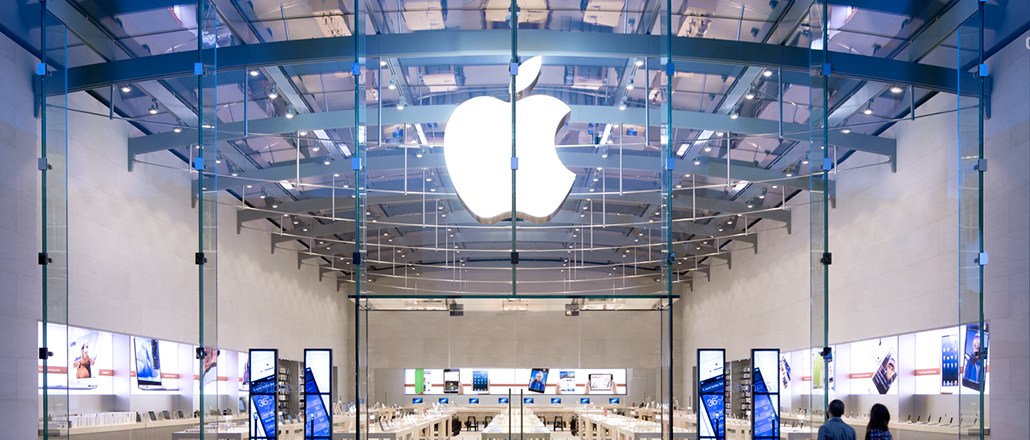
The fanboys flocked. The tech press praised. (Well, mostly.) On Tuesday, Apple introduced the long-awaited iPhone 6, the company’s first new smartphone model since iPhone 5’s debut two years ago. In fact, Apple announced two new iPhone 6 models — both with larger screens and faster A8 processors.
The rollout of these new models on September 19 may be the tipping point marketers need to move to richer mobile display ads. After all, Apple owns 42 percent of the market and 51 percent of mobile impressions are served on iOS devices, per Celtra’s “Mobile Display Ads Performance Report” for Q2 2014.
Larger displays mean broader canvases
Introducing larger displays is one of the rare instances of Apple playing catch-up in an industry it otherwise dominates. In the years since the iPhone’s launch, the Android ecosystem has eaten away at Apple’s market share. What’s more, Unit Engagement Rate is higher for Android devices across all formats per Celtra’s Q2 2014 report. Larger smartphones, such as the Samsung Galaxy S5, with its 5.1-inch display, are at least partly to credit.
With their new Retina HD displays, the iPhone 6 and iPhone 6 Plus are putting more pixels in front of consumers. And, the new A8 chip allows advertisers to produce more elaborate, more immersive experiences for mobile display. This means shorter load times for ads that include rich media like video and better responsiveness for in-ad mobile features.
For those advertisers who still push static display ads on mobile, it’s time to accept that, as of Tuesday, both iOS and Android (which together account for 98 percent of all mobile display ad impressions) are equipped to serve consumers exactly what they want: expansive, rich media experiences.
Ads must follow suit.
Ad position: web_incontent_pos1
Devices are defining new viewing standards
Eighteen years ago, the Internet Advertising Bureau (IAB) rolled out its first set of “voluntary guidelines” for web-based advertising. In the nearly two decades since, these standards have often failed to keep pace with the technology that relies on them. With the new iPhone, we can no longer depend on old specs to define the consumer’s viewing. Technology is driving innovation.
On Tuesday, CEO Tim Cook promised near-desktop-grade scaling on its iOS/mobile browsers, thanks to the company’s ongoing investment in XCode. Running on larger screens and faster chips, the new iPhone will allow marketers to create ads, apps and campaigns that are more scalable — and therefore more flexible.
When half of any market pushes the limits of current standards — as Apple is doing with these new technologies — advertisers should take note. It’s more important than ever to produce unified, consistent cross-device consumer experiences.
Mobile gets more respect with native HTML5 support
Ad position: web_incontent_pos2
In the iPhone’s earliest days, not supporting Flash (Adobe’s plug-in for interactive graphics and video) was controversial. Many analysts assumed that Apple would eventually succumb to pressure from consumers and developers, and support the popular browser-based solution on its iOS.
But, no — Apple has held its ground. As HTML’s capabilities grew, the Flash fanatics quieted down. Today, even on desktop, HTML5 has largely supplanted Adobe’s video plug-in; on mobile, Flash is all but extinct.
When designing cross-screen display campaigns, marketers should look at the new iPhones as powerful, flexible new venues for their most ambitious efforts. As HTML5 steadily gains ground, fully dynamic ads can be served from URLs, not files; they can run on any device without the risk of crashing; they work great with programmatic; and they’re easier to track and measure.
Even better, marketers can build campaigns for both iOS and Android to take full advantage of the new ways to deliver brand message closer to users through display advertising. We’re not quite living in a unified mobile world, but we have the tools to put quality content in front of the largest number of consumers.
What does it mean?
After eight quarters of consecutive drops, for the first time we’re seeing a significant rebound in expansion rate on mobile: nearly 20 percent. The outlook for mobile and, indeed cross-screen display, is optimistic and at least partly fueled by the technological opportunities offered by the new iPhones. For the 51 percent of all mobile ad impressions that pass through iOS, an even more robust consumer engagement experience is now possible.
More from Digiday
Sliders test article
Amazon bulldozes into new markets, upending the status quo and challenging rivals. Today, it’s the turn of the ad-supported streaming world, and Amazon is coming out of the gate strong. Why, you ask? Because Amazon is serving marketers an opportunity beginning today to reach a whopping 115 million monthly viewers in the U.S. alone, courtesy […]

How CTV and DOOH are growing this political season for smaller agencies
Connected TV and digital out-of-home are playing a bigger role in upcoming elections and politics – especially for smaller agencies looking to place clients’ dollars.

CMO Strategies: Advertisers identify the top attributes on ad-supported streaming platforms
This is the third installment in Digiday’s multi-part series covering the top ad-supported streaming services and part of Digiday’s CMO Strategies series. In this report, we examine which ad attributes matter the most to marketers on streaming platforms.
Ad position: web_bfu